Panamanian food rewards foodies with a fascinating diversity of cooking traditions, a bonus of the nation’s position as an international crossroads and a land bridge linking North and South America.
Along with indigenous peoples, many ethnic groups have traveled through and settled in the country. When the Panama Canal opened in 1914, it connected the Atlantic and Pacific oceans, bringing even more people from different backgrounds to and through Panama. Each contributed to the country’s rich culture and varied food.
Here are some of the finest examples of Panama’s cuisine to enjoy.
Sancocho de Gallina
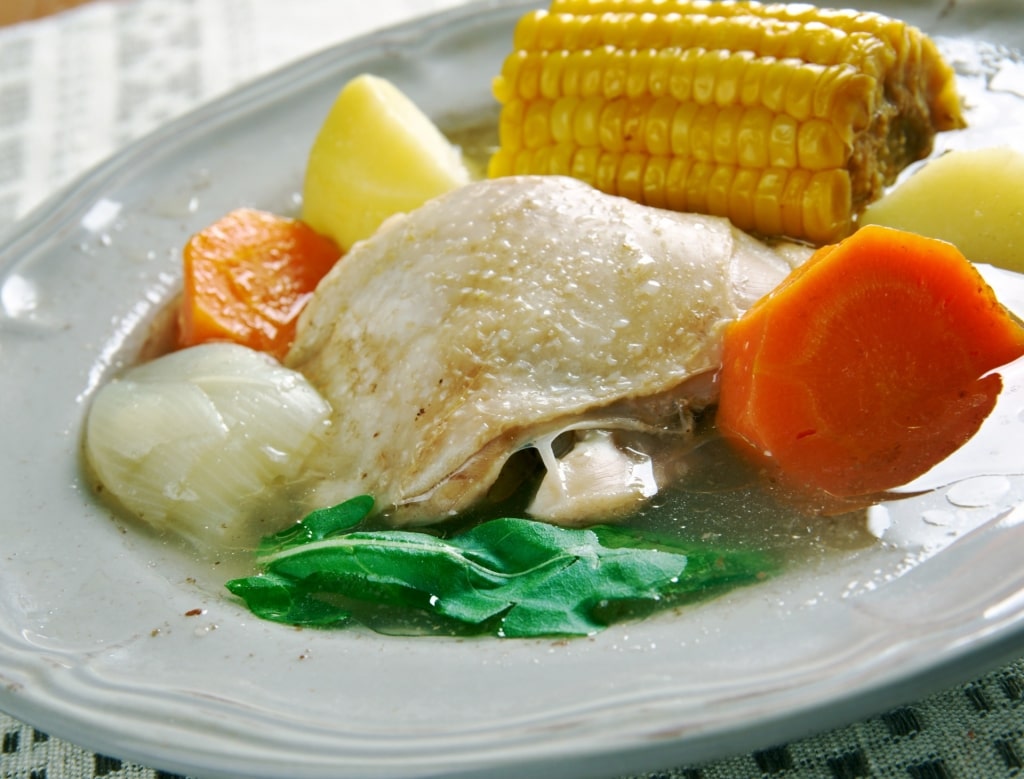
Sancocho de gallina
Think grandma’s chicken soup, but probably, spicier, and you’ve conjured, sancocho de gallina, beloved as the national dish of Panama. Some consider the mix a stew.
Either way, the bowl contains potatoes, yuca, plantains, corn on the cob, hot sauce, oregano, yellow onions, scallions, tomatoes, and a big piece of chicken, even a breast or leg, and culantro, a slightly sweeter and stronger flavored spice than cilantro.
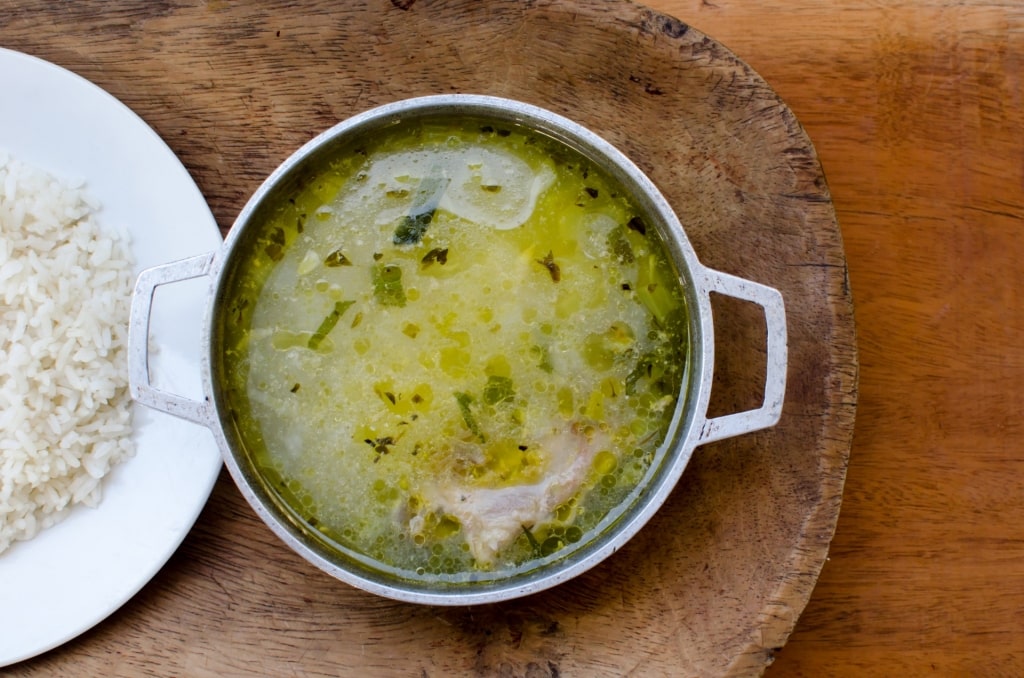
Sancocho de gallina
Locals devour sancocho de gallina for breakfast, lunch, and dinner and down it as an elixir to vanquish colds and hangovers. When it’s hot outside, Panamanians eat sancocho de gallina to cool off. Rice or tortillas accompany this Panamanian food staple.
Ropa Vieja
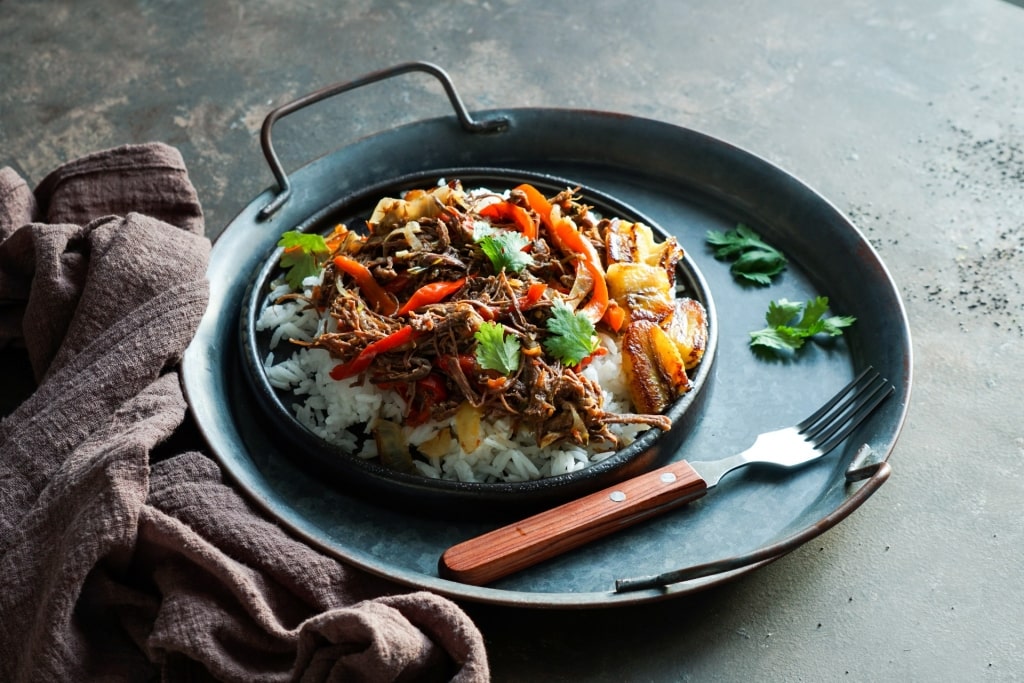
Ropa vieja
Ropa vieja translates to “old clothes.” According to a Spanish legend, when a poor man ran out of food, he cut up his old clothes to make stew. Squint, and you might just see how the shredded beef could invoke an image of the vision of tattered pants.
Cooks simmer the shredded beef with tomatoes, onion, garlic, peppers, onions, and sometimes olives, and season the mix with paprika, oregano, coriander, and other spices of Spanish origin.
Tortillas
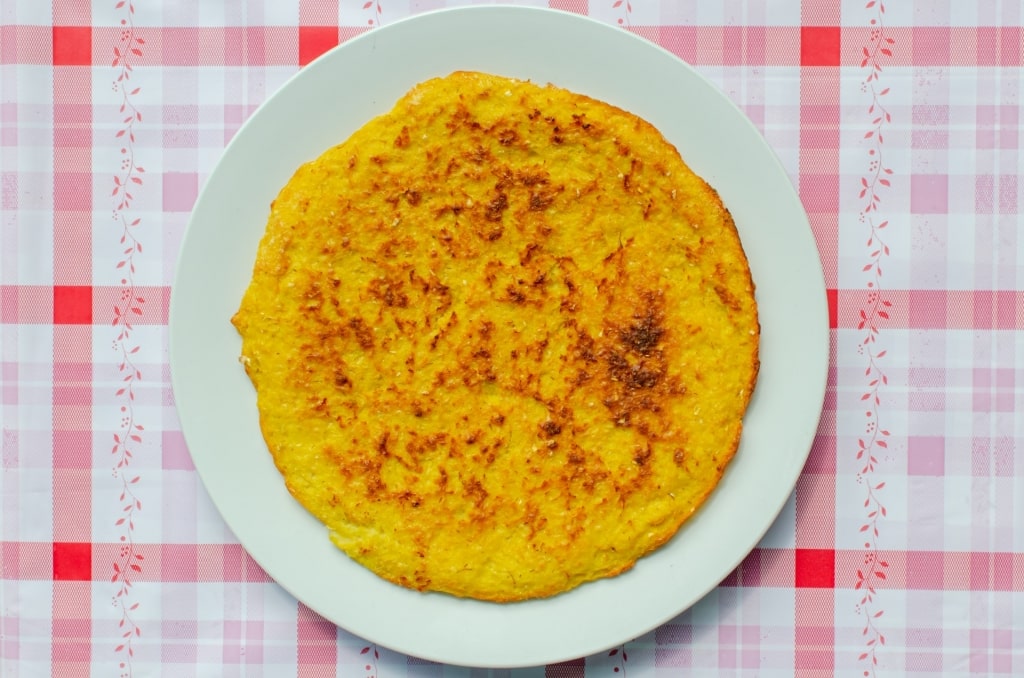
Tortillas
Panamanian tortillas hark back to the country’s indigenous people, including the Chibchan, Chocoan, and the corn-growing Cueva (also known as Cuna). Panamanian tortillas, made from deep-fried or grilled corn dough, are thicker than the Mexican version.
The tortillas accompany stews, soups, and other entries as a side dish. Many locals start their day with a breakfast of tortillas topped with eggs and cheese.
Tamales
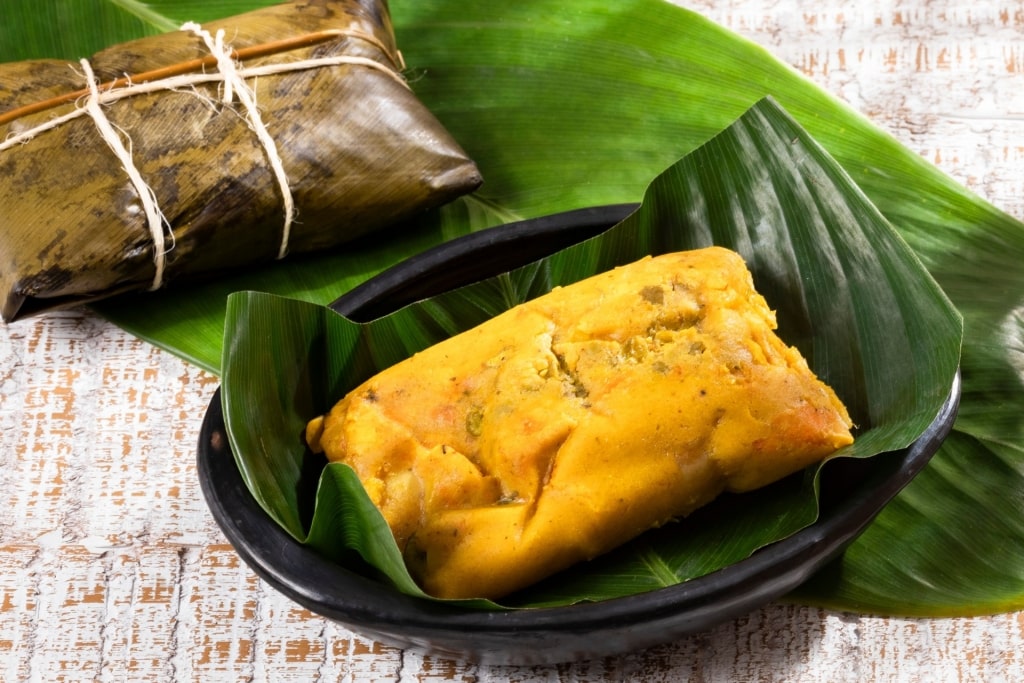
Tamales
It’s not surprising that Panama’s tamales taste much like those served in Central and South America. To break free of Spain, Simon Bolivar and others in 1812 formed Gran Colombia, uniting the regions of Panama, Colombia, Venezuela, and Ecuador. Even though the union crumbled in 1830, the food traditions mingled.
A basic tamale consists of a corn dough that enfolds a filling of chicken, beef, vegetables, or a combination of all three.
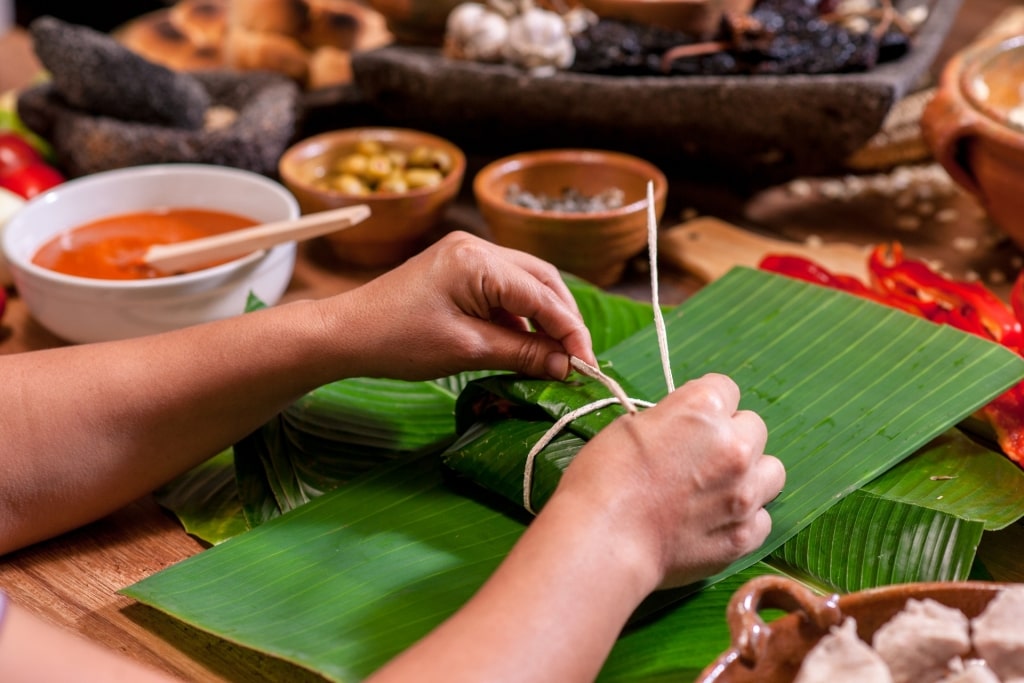
Tamales
Before cooking, the tamales are wrapped in banana leaves to prevent burning and contain the juices. A labor-intensive dish, tamales often grace tables at weddings and holidays.
Sao
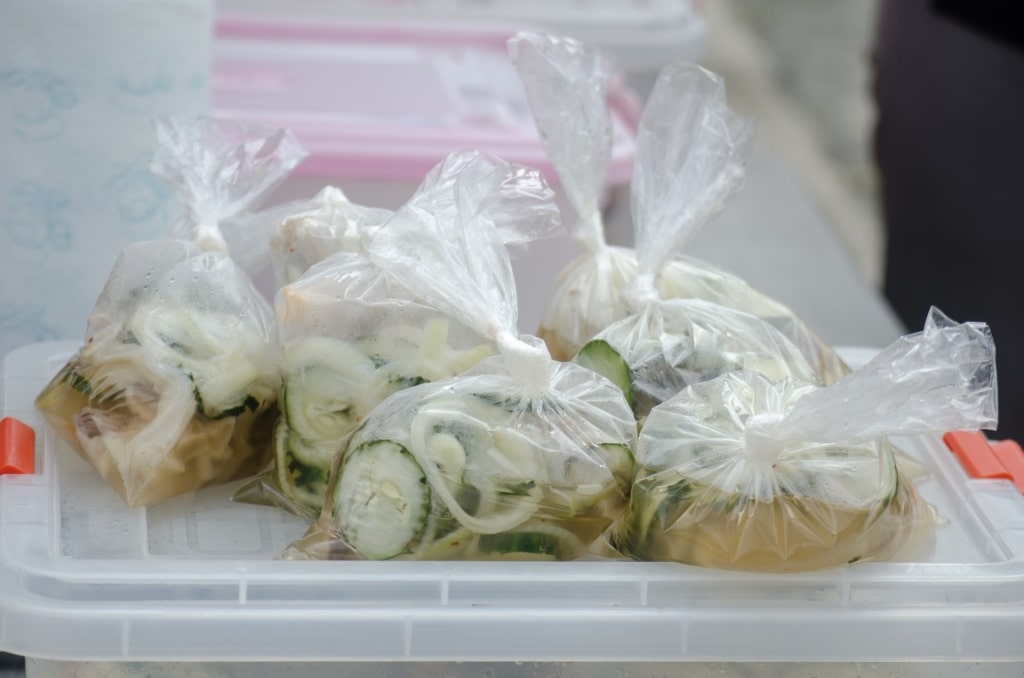
Sao
Don’t think about it; just try sao, a popular dish of pickled pigs’ feet first introduced during the time of slavery. African slaves never received the best parts of any meat, yet managed to turn what others sneered at or discarded into tasty fare.
After boiling, the pigs’ feet are pickled overnight in vinegar, lemon juice, onions, and cucumbers. Some contemporary cooks substitute chicken feet.
Patacones
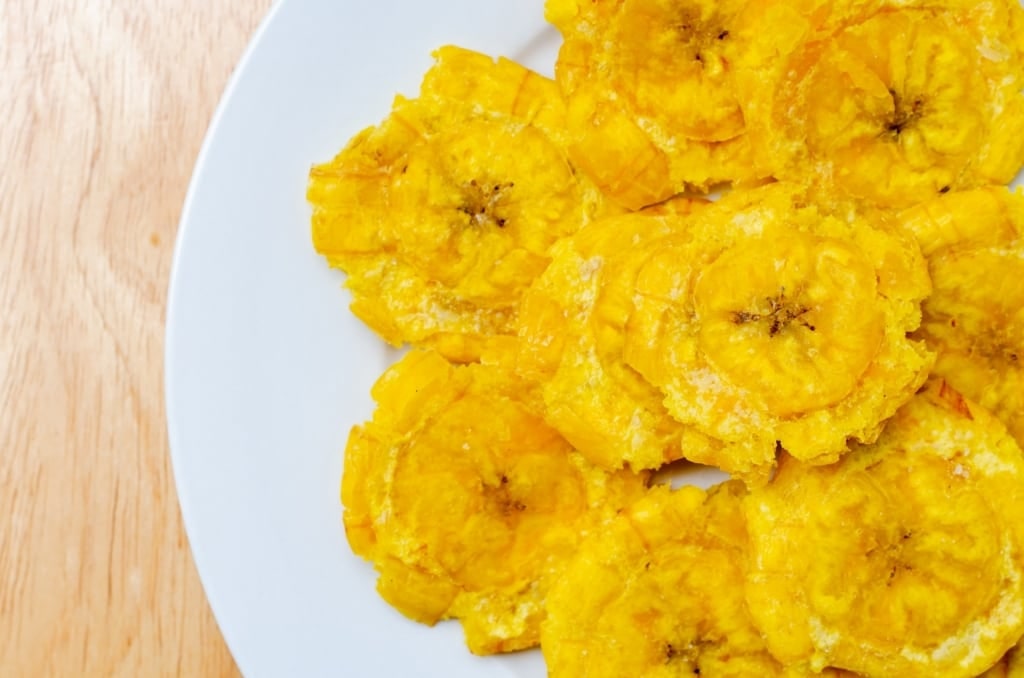
Patacones
In Panama, “patacones” are tostones by a local name. Patacones, fashioned from twice-toasted, unripe green plantains, don’t taste like sweet plants made from ripe green plants.
Often starchy and a bit bland, locals eat patacones, a popular Panamanian food, with ketchup or another sauce. The chips are a tasty snack food.
Paella, or One Pot
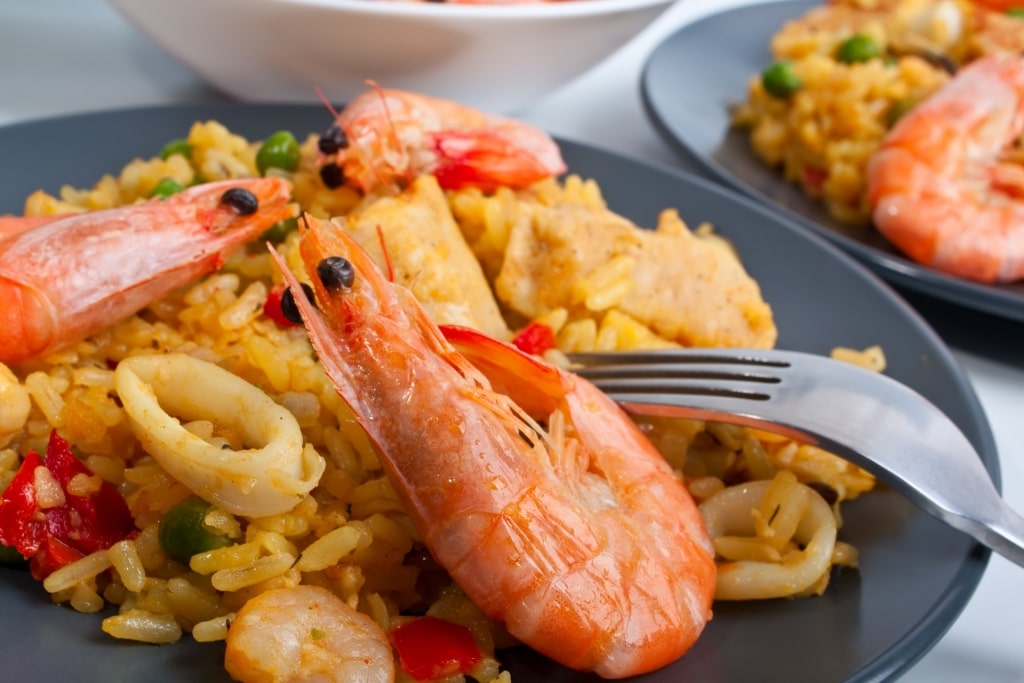
Paella
African slaves prepared “one pot” with leftover scraps of seafood, coconut, and rice. In Panama City’s Rio Abajo neighborhood, first settled by Jamaicans who came to build the Panama Canal, you can find one pot, also known as West Indian paella. Contemporary chefs ad Caribbean seasonings and shrimp.
Read: Best Places to Visit in Central America
Carimanolas
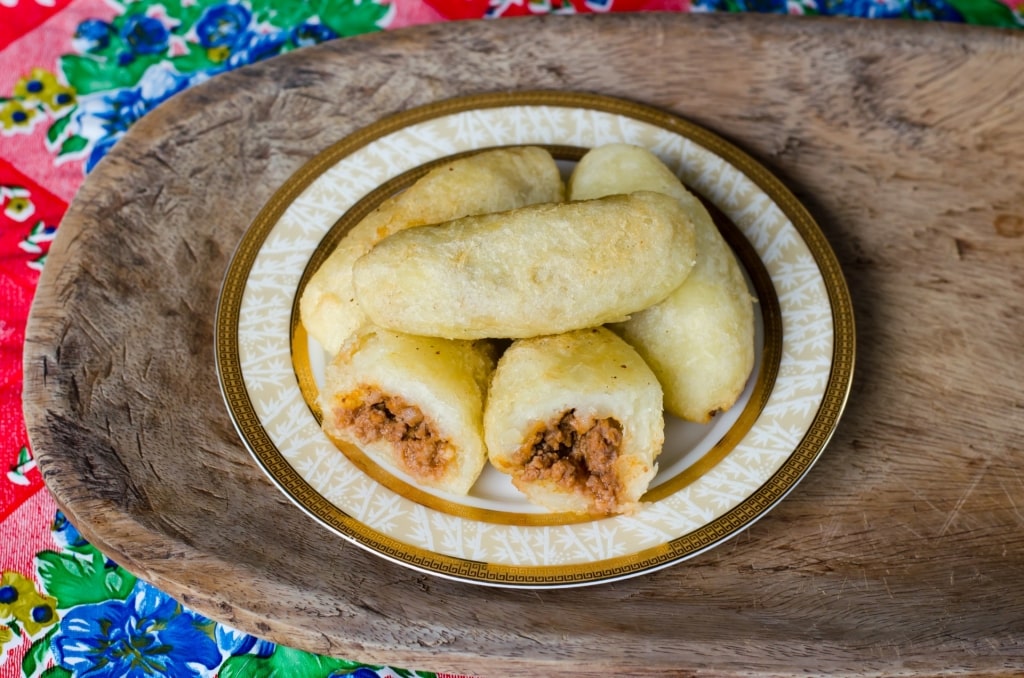
Carimanolas
Conquer afternoon hunger pangs as the Panamanians do with carimanolas, yuca fries stuffed with beef, often mixed with cheese. The yuca is boiled, mashed, mixed with flour, butter, and eggs, and then formed into dough balls.
These are filled with a sauteed mix of minced meat, onion, garlic chili powder and tomato paste, and fried, creating a delicious snack.
Ceviche
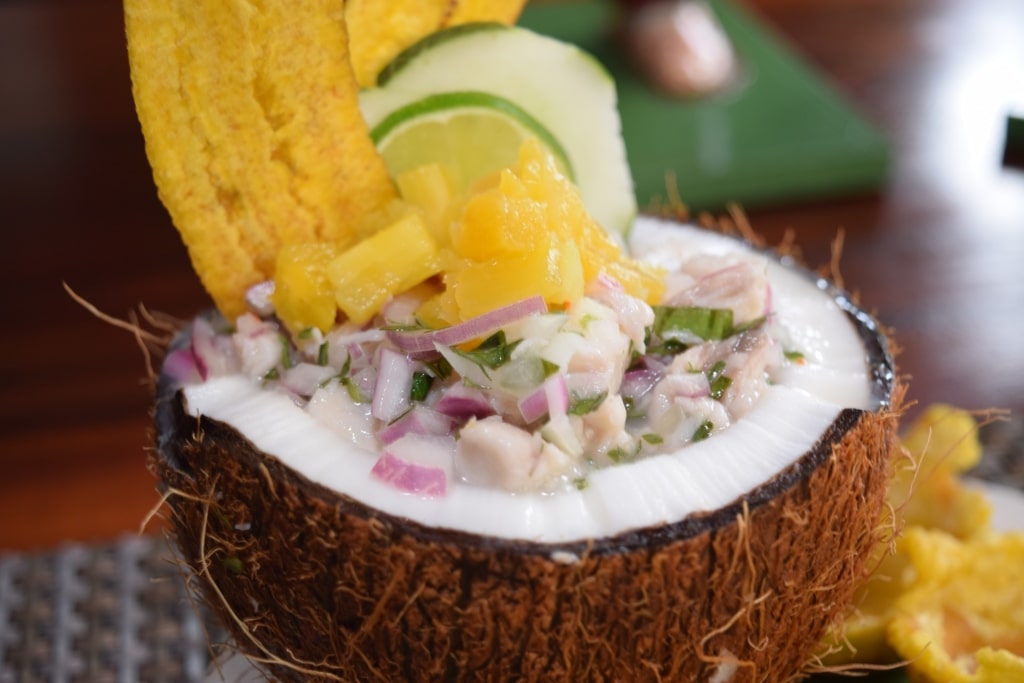
Ceviche
“Panama”, in one of the region’s indigenous languages, translates to “an abundance of fish”. As in many coastal countries, ceviche, small pieces of raw fish, often white sea bass in Panama, are marinated in a mixture of lime juice, herbs, and onions.
Look for fresh ceviche at stalls in seafood markets. Historians attribute ceviche to the ancient Incans who lived in what became modern-day Peru and Ecuador.
Shumai
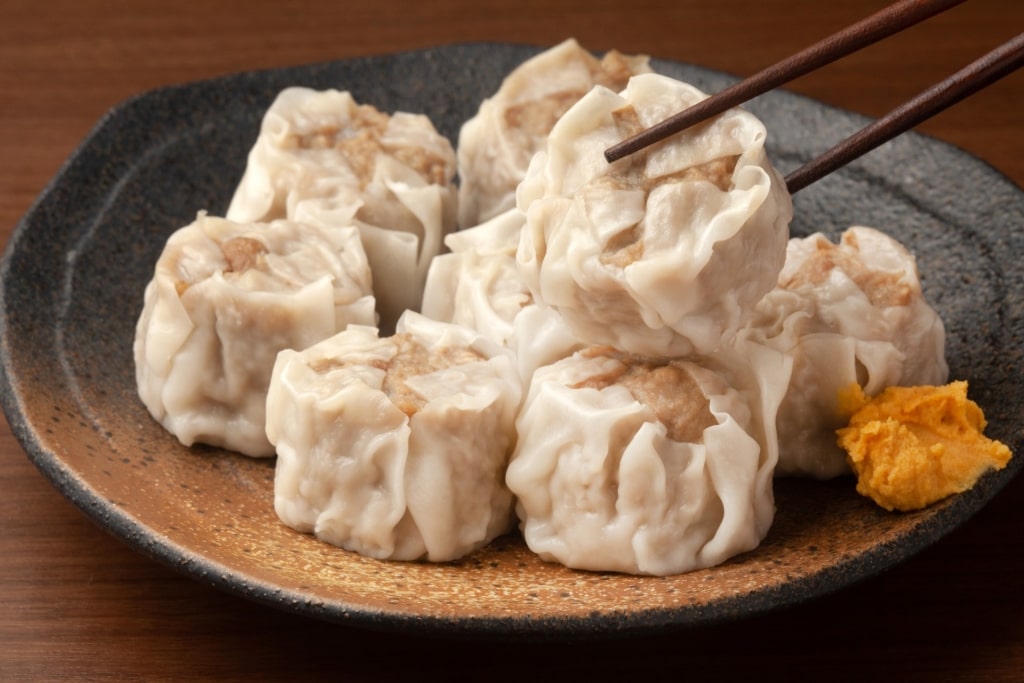
Shumai
Thank Chinese immigrants for shumai, the ubiquitous steamed dumplings filled with pork and shrimp. Street vendors and supermarkets sell this popular street food.
Rice and Beans
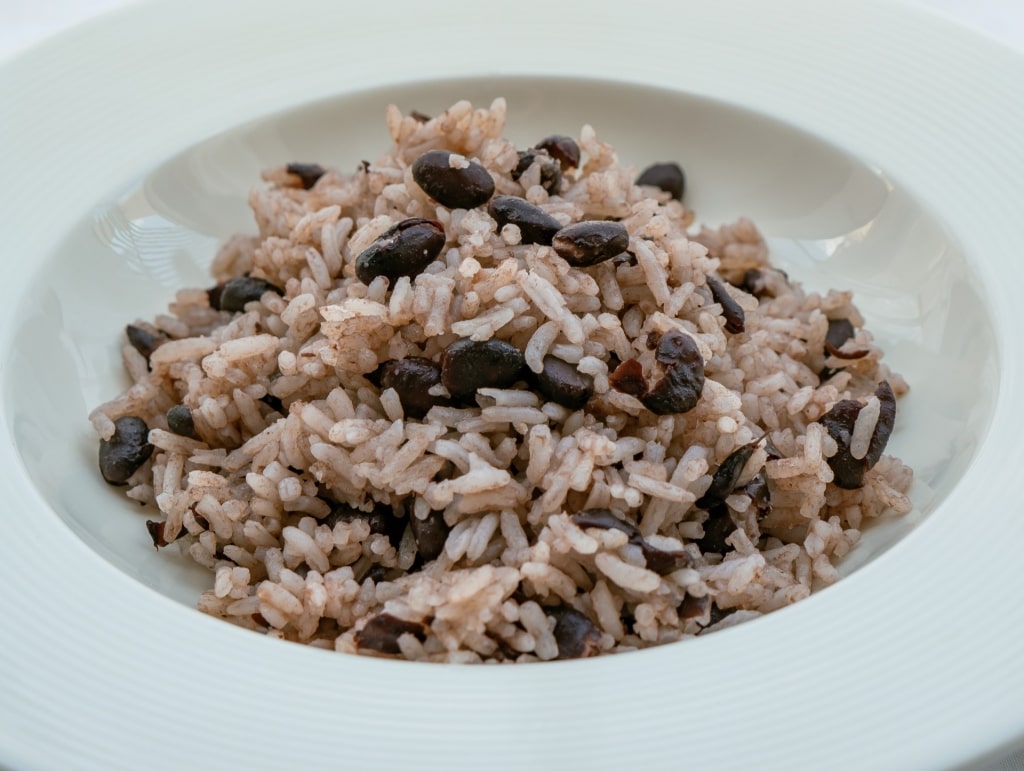
Rice and beans
In Panama, as in many cultures, rice appears on plates as a side dish or a main course, depending on whether the staple has meat or vegetables. Among the many versions are rice and beans.
The Spanish brought gallo pinto, which translates as “spotted rooster” to the Americas. Unlike in Costa Rica, the Panamanian version adds pork.
Arroz Chino
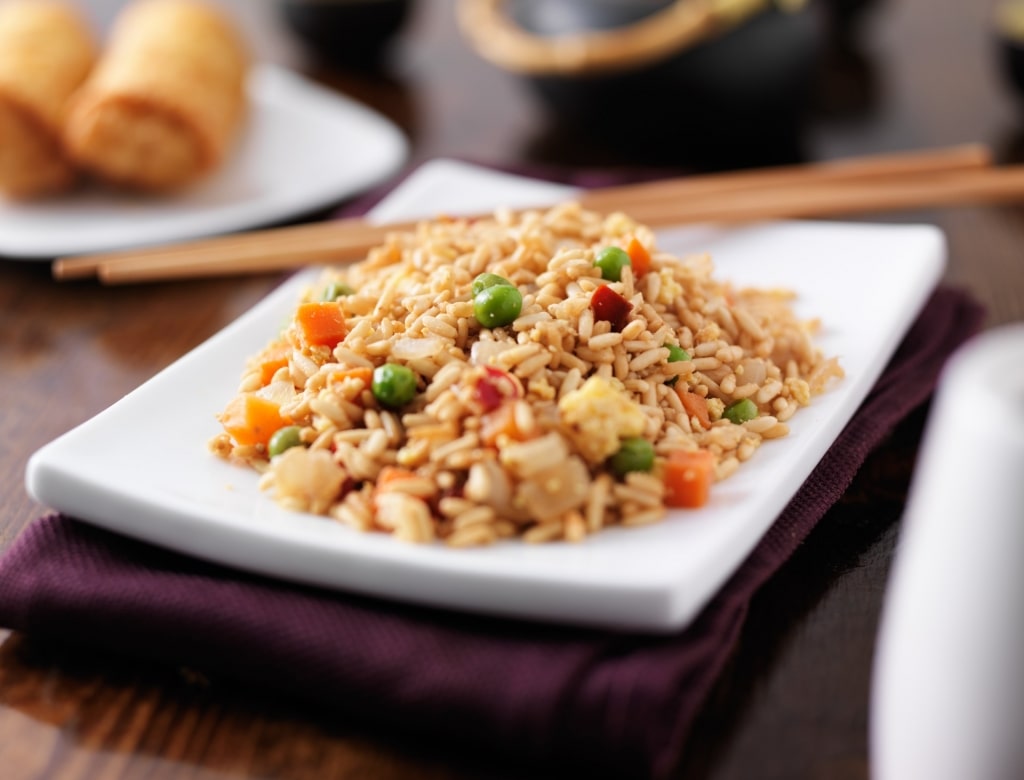
Arroz chino
When you want a filling snack of rice, look for arroz Chino in cafeterias and budget eateries. The Chinese-influenced dish is a stirfry of rice with carrots, onions, peas, and chicken, pork, or shrimp.
Arroz con Guandú

Arroz con guandú
Another take on rice, arroz con guandú often appears at holidays. The rice features “guandú”, or pigeon peas, and coconut milk, with the addition of sweet peppers and onions, and is seasoned with garlic, culantro, and black pepper.
Arroz Con Pollo
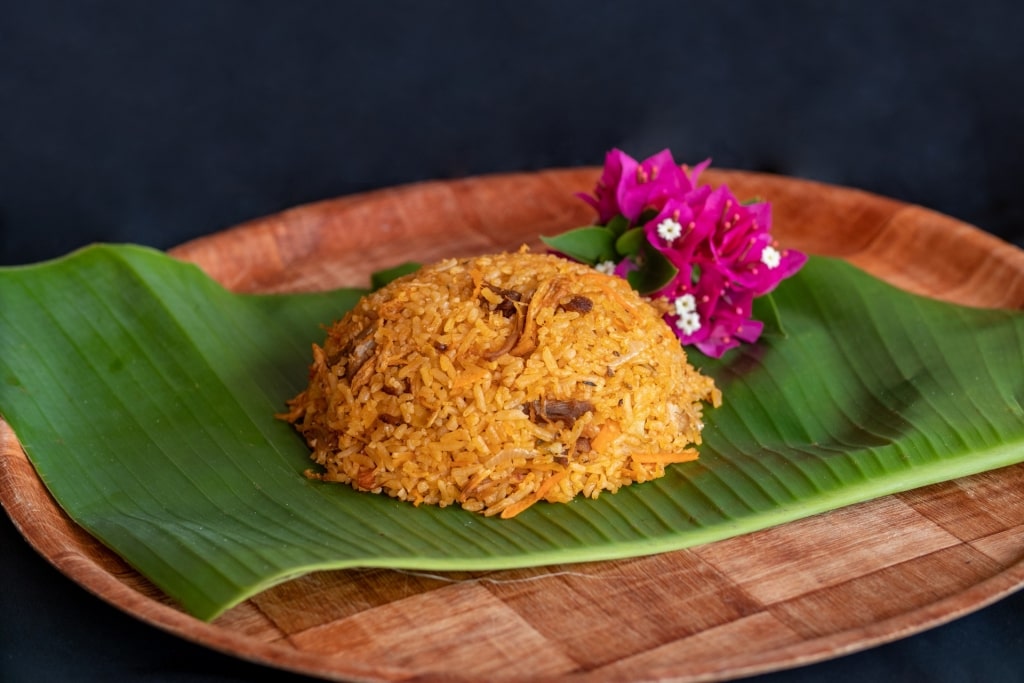
Arroz con pollo
Arroz con pollo, a one-pot chicken with rice dish, is ubiquitous in Spain and Latin America. In Central and South America, the chicken cooks slowly in a shallow pan with tomato sauce, tomato paste, peas, other vegetables, and rice. The Panamanian version adds olives, saffron, and sometimes, dark beer.
Cocadas
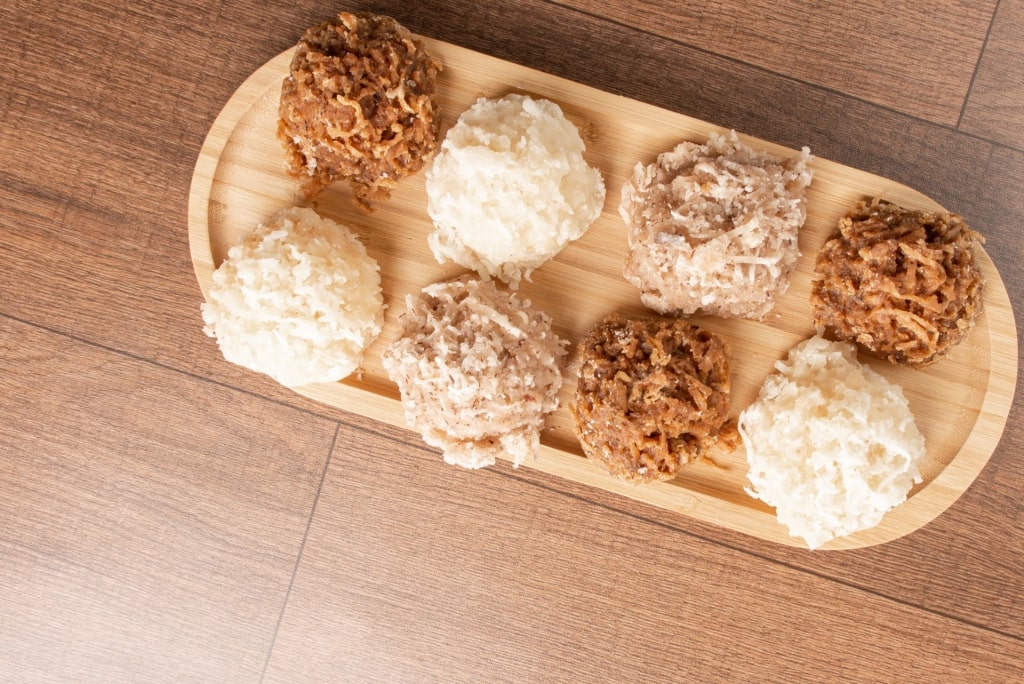
Cocadas
Don’t miss tasting cocadas, a sweet favored by Panamanians. Locals make different versions of this coconut treat. A recipe with Spanish roots produces a macaroon-like cookie.
In another version, coconut flakes are caramelized and fashioned into balls, a recipe that finds parallels in West African street snacks. Whichever type you choose, it’s hard to eat just one.
Sopa Borracha
Even though “sopa borracha” translates to “drunk soup”, it’s actually a dessert. Typically served in a goblet, sopa borracha uses sponge cake as a base, all the better to soak up the thick syrup, the dessert’s star.
To create the sweet sauce, the cook pours rum and brandy over raisins and prunes, allowing the fruit to absorb the liquid overnight.
After straining the fruit, the liquid is simmered with cinnamon, sugar, lemon juice, rum, wine, and often sherry. Then, the syrup is poured over the sponge cake, drenching it with a boozy sweetness, and the liquor-soaked prunes and raisins are tossed in as a garnish.
The Panamanian dessert is reminiscent of Spanish bizcochos borrachos, a sponge cake with liquor, and Jamaican black cake, a cake with dried fruit and liquor.
Hojaldras
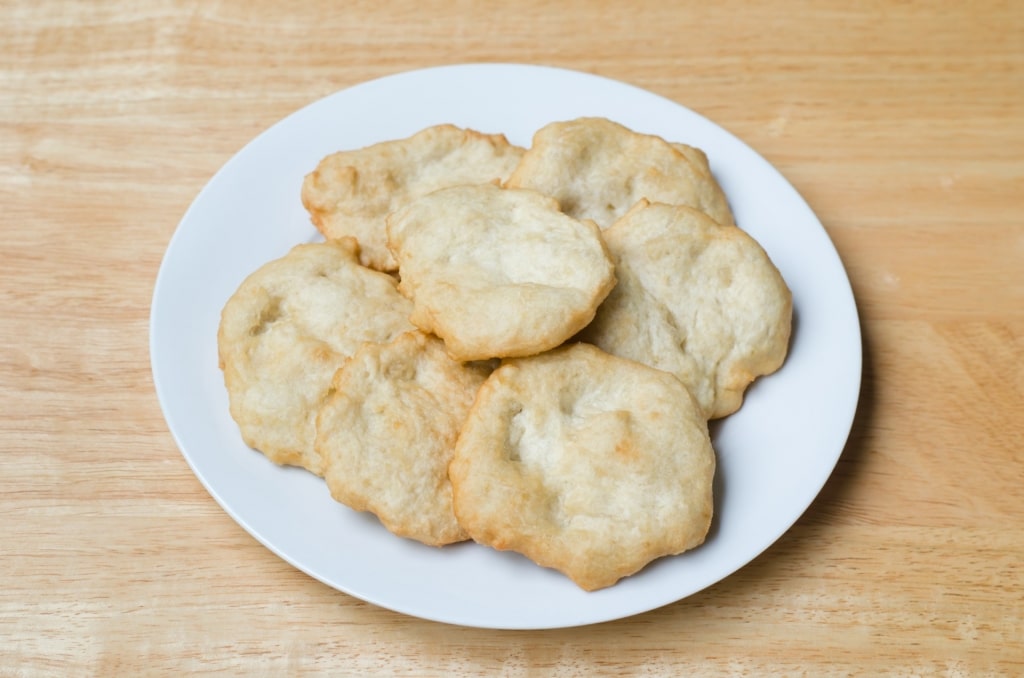
Hojaldras
In Spanish, “hojaldra” means puff pastry. Imagine donuts for breakfast, and you capture the allure of the simple, but tasty hojaldra, a flour roll that’s fried. Panamanians eat this staple for breakfast with fried eggs, sausages, and black beans.
Bistec Picado
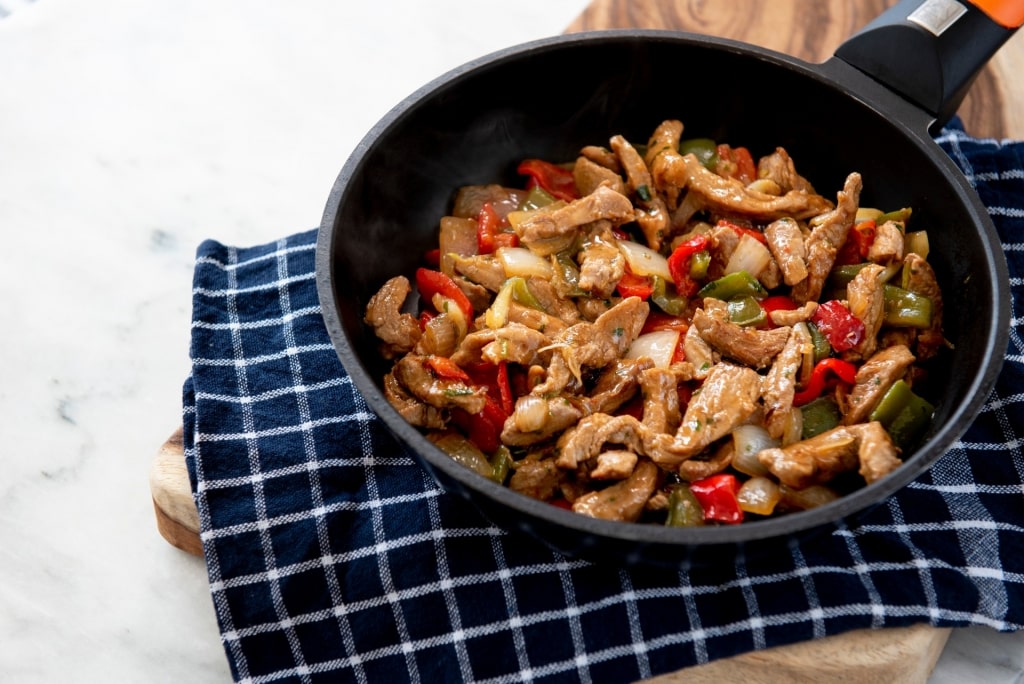
Bistec picado
When not starting the day with hojaldras, many Panamanians opt for another hearty dish, bistec picado. Translated as “ground steak”, the Panamanian comfort food seems part-stew and part-stir fry.
The plate starts with strips of steak cooked in a frying pan over low heat and mixed with bell peppers, tomatoes, tomato sauce, onions, and garlic. This popular Panamanian food is also served for dinner.
Raspao
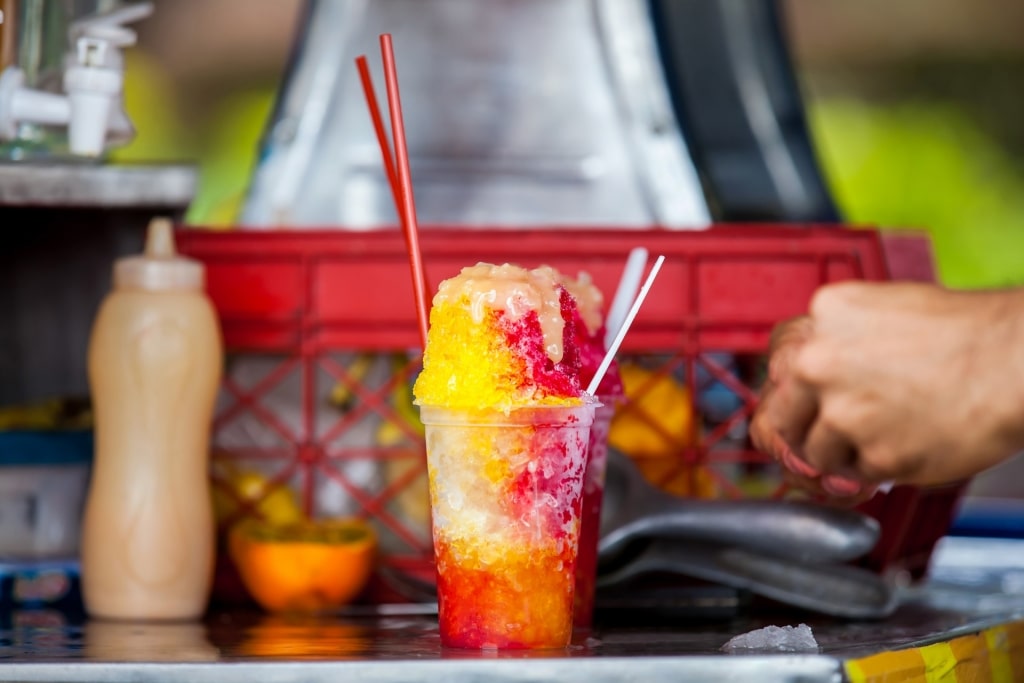
Raspao
Eating shaved ice is a classic way to cool off on a hot day. When strolling, find a vendor selling raspao, the Panamanian version of a snow cone. Real fruit sweetens the tastiest versions, but other versions use artificial sweeteners.
Most sellers can add a dollop of condensed milk to enhance the syrupy quality. Raspao may have caught on when American workers building the Panama Canal used the treat to cool off.
Read: Tips for Visiting the Panama Canal
Chicheme
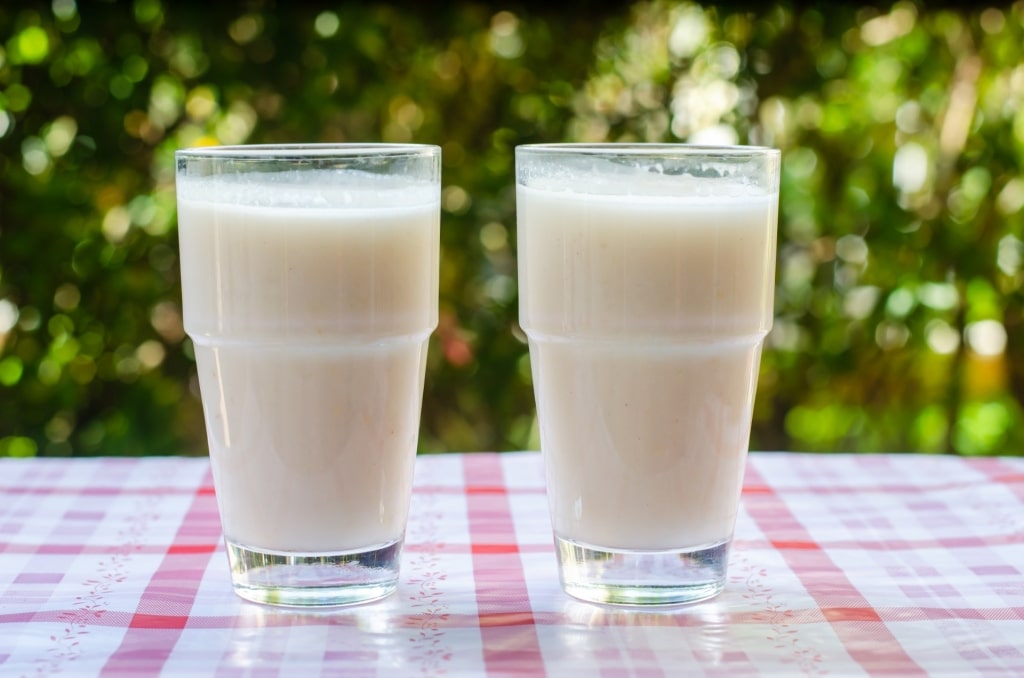
Chicheme
Some label chicheme a drink, while others think of the sweet liquid as a dessert. Ponder the distinction while sipping this refreshing Panamanian beverage made from boiling corn with evaporated milk, cinnamon, and sugar.
Chicheme can be served ice-cold as a cool tonic on hot days, or warm, like tea. Chicheme’s roots go back to Panama’s indigenous peoples, who concocted a corn-based drink.
Seco Herrerano
For something more fortifying than chicheme, sample seco Herrerano, often called the national liquor of Panama. The spirit gets its name from sugarcane grown in the Pese valley in the province of Herrera. Triple distilled, the alcohol is 80 percent proof.
A white liquid, Seco Herrerano, unlike rum, contains no molasses. Like rum, you drink it straight or mix it in fruity cocktails.
Plantintas
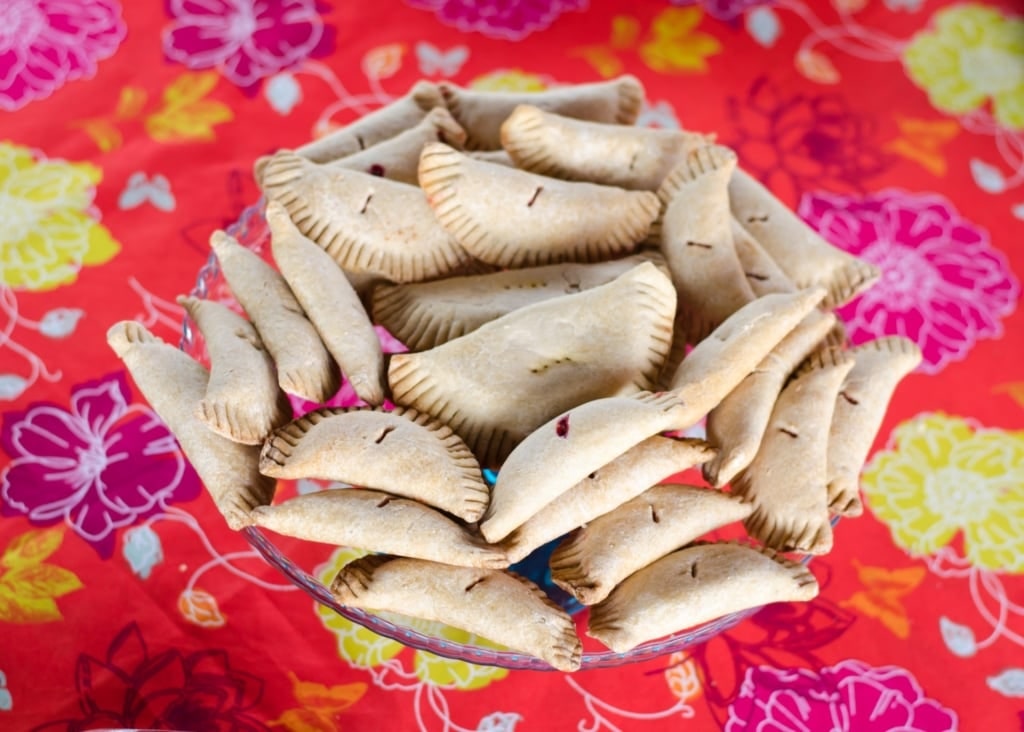
Plantintas
Somewhere between a cake and an empanada, a plantinta is a sweet pastry made from a dough of flour and ripe plantains. Hence the name “plantinta”, which means plantain tart.
The Afro-Caribbean recipe calls for nutmeg, sugar, cinnamon, and often a filling of lemon cream. Look for plantintas in bakeries and cafes in Colon, where the pastry is especially popular.
Pesada de Nance
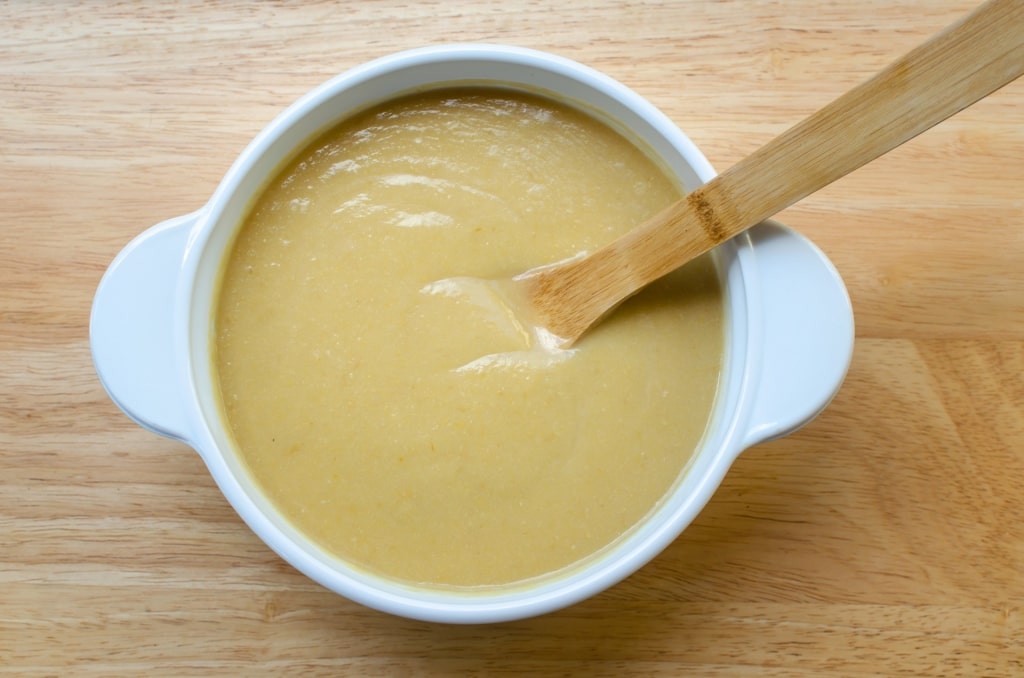
Pesada de nance
Nance, or Nancy trees, officially known as Byrsonima crassifolia, grow freely in Panama. Locals use the fruit to make the dessert pesada de nance.
The small round nances, called hog berries in Jamaica, look similar to cherries, but taste sour. To sweeten the dessert, cooks use cane sugar and evaporated milk.
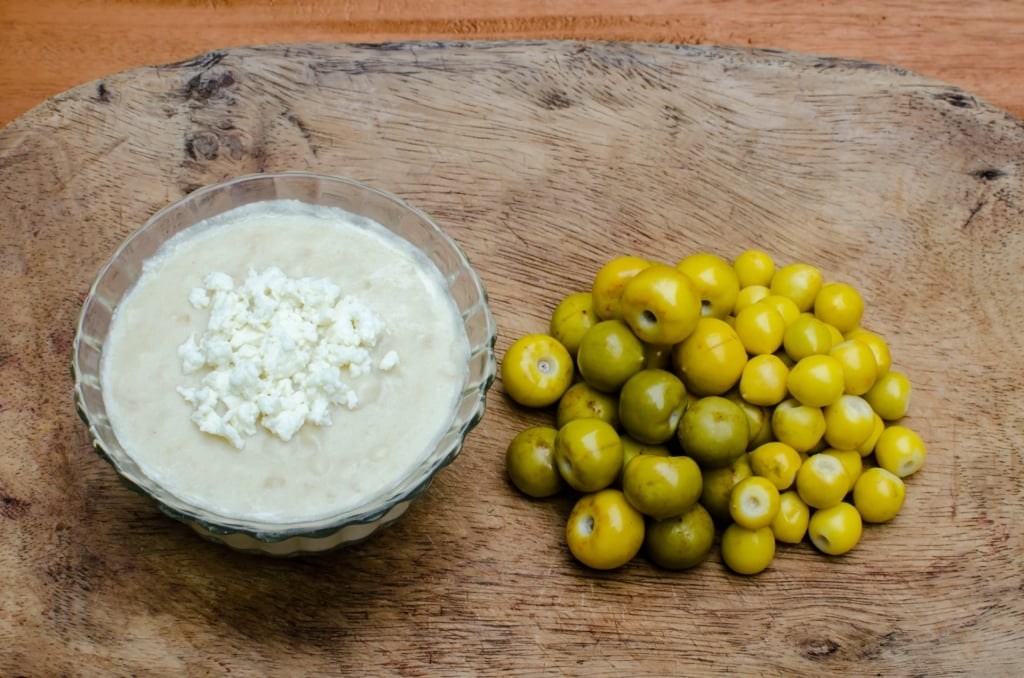
Pesada de nance
White cheese tops the pudding-like dessert, which is served hot or cold. For many Panamanians, this food conjures memories of their abuelitas (grandmothers) serving the comforting treat.
Carne en Palito
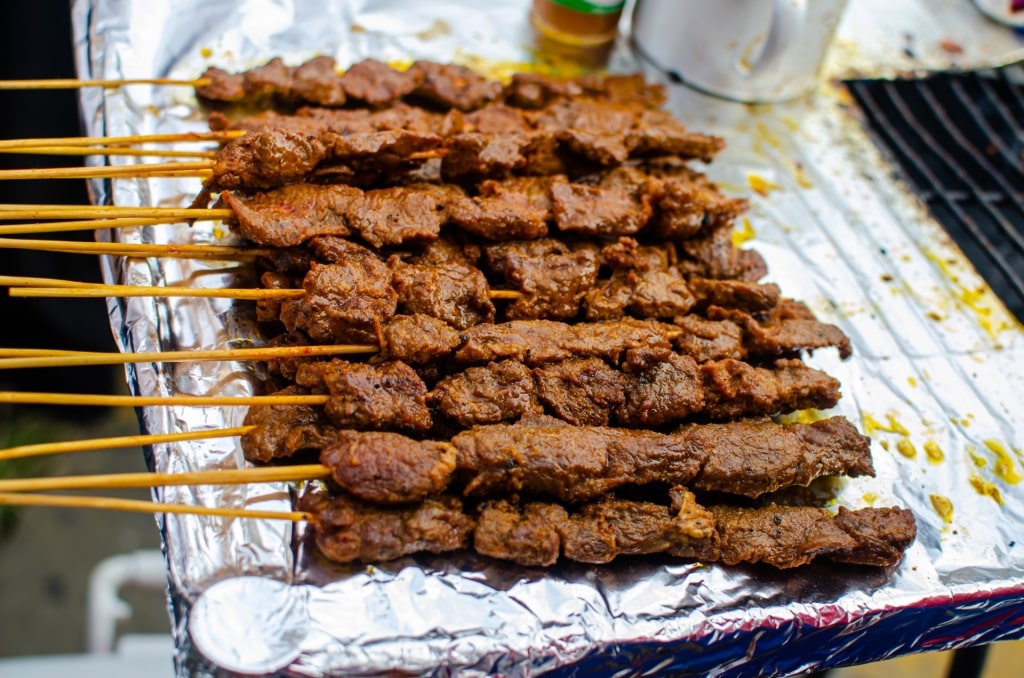
Carne en palito
Find a local food truck or street vendor and buy carne en palito, grilled meat on a stick. Popular throughout Central America, carne en palito’s secret is the sauce.
The best cooks marinate the beef, chicken, or pork for hours in orange juice, cumin, salt, pepper, and other spices. Recipes, of course, vary; every cook has their own version.
Beet Salad
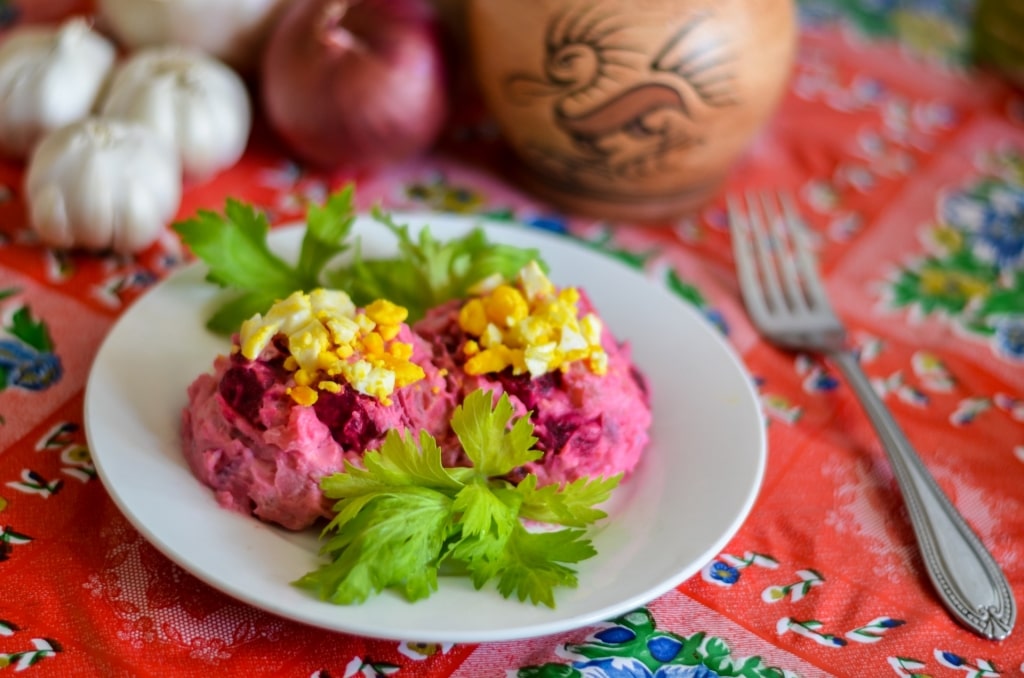
Beet salad
Beets often get a bad rap. When you were little, perhaps your mother or father made you eat them, so you shun the root vegetable.
Maybe you will change your mind when you taste ensalada de feria, a Panamanian beet salad often served at fairs. The simple recipe mixes eggs, beets, carrots, potatoes, and mayonnaise. Perhaps it’s the festive setting that makes the salad taste good.
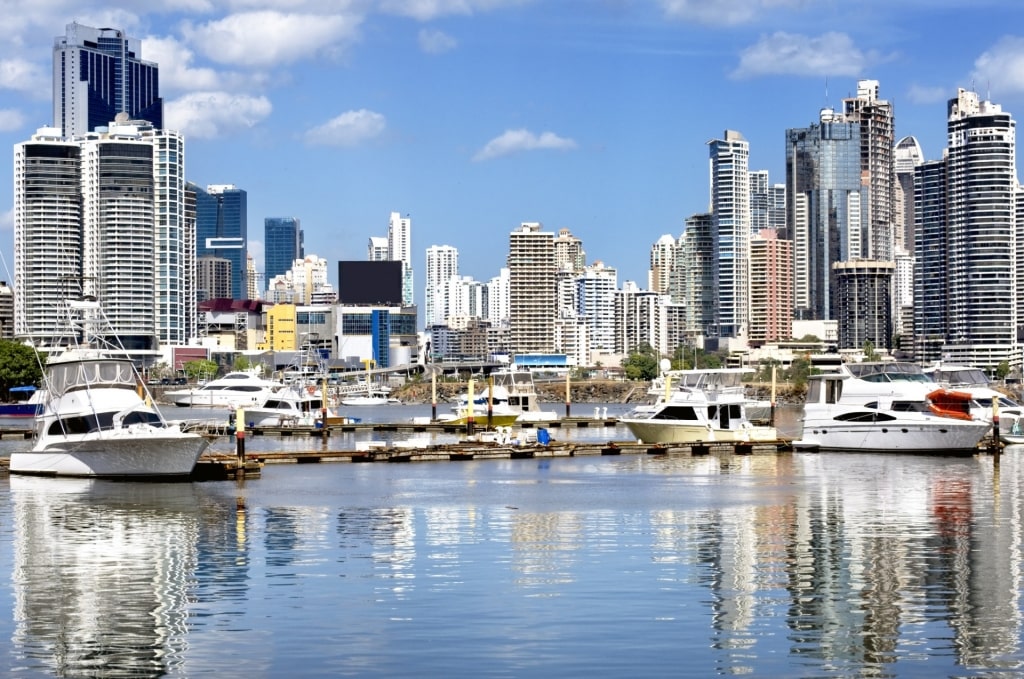
Panama city
Ready to devour Panamanian food? Then browse Celebrity’s cruises to Panama and plan your dream vacation.



